Biodiversity on Earth is a marvel. The variety of life forms adapted to this rocky ocean planet can be difficult to conceive. Over millions of years, our flora and fauna have developed a wide variety of stunning and puzzling ways to survive and reproduce—in many cases, we are still trying to understand why they behave the way they do. Below, a list of some of the weirder plants to grace this planet.
Living stones
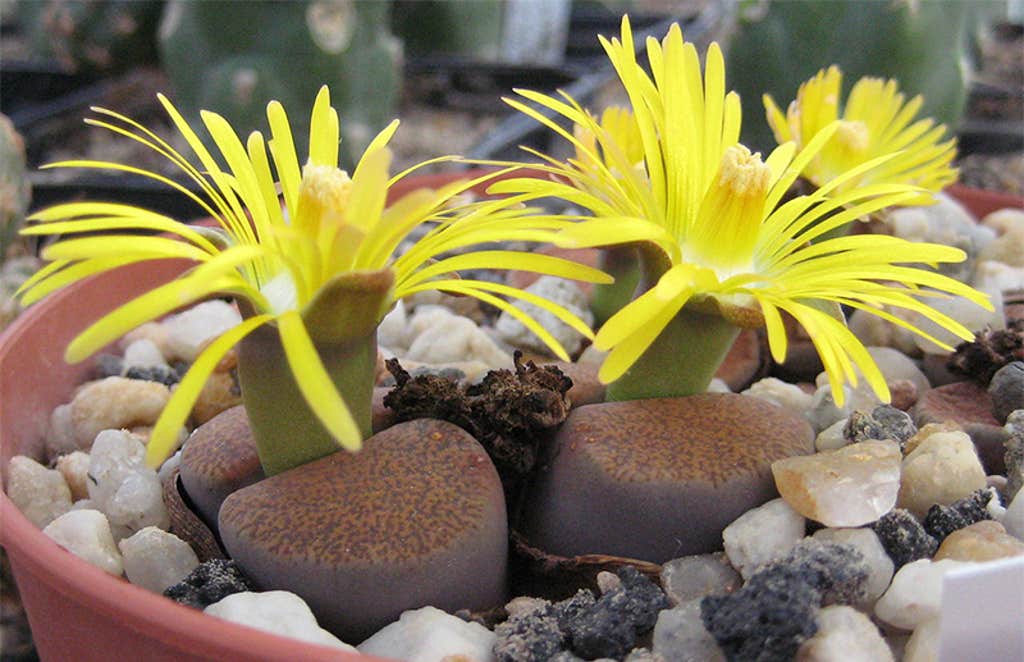
One would reasonably expect that few species could call the dry deserts of South Africa home. But Lithops thrives there. These palm-sized plants specifically adapted to thrive in arid habitats, and their body parts, including the tissues necessary for photosynthesis, live mostly underground. While it may sound strange for a photosynthetic organism to evolve in a manner that prevents it from absorbing as much sunlight as possible, this actually works in Lithops’ favor. Since the soil offers greater stability and a lower temperature, it helps the plant survive the scorching heat. Meanwhile, Lithops’ visible cover above the ground is translucent, enabling sunlight to reach the plant’s photosynthetic parts while creating the illusion that the plant is actually a small rock. Interestingly, the pebble-like appearance of the plants’ aboveground parts is considered the main reason why herbivores rarely prey on them, though this may be more of a circumstantial benefit of their curious evolution than an intentional survival adaptation.
Nest ball plant
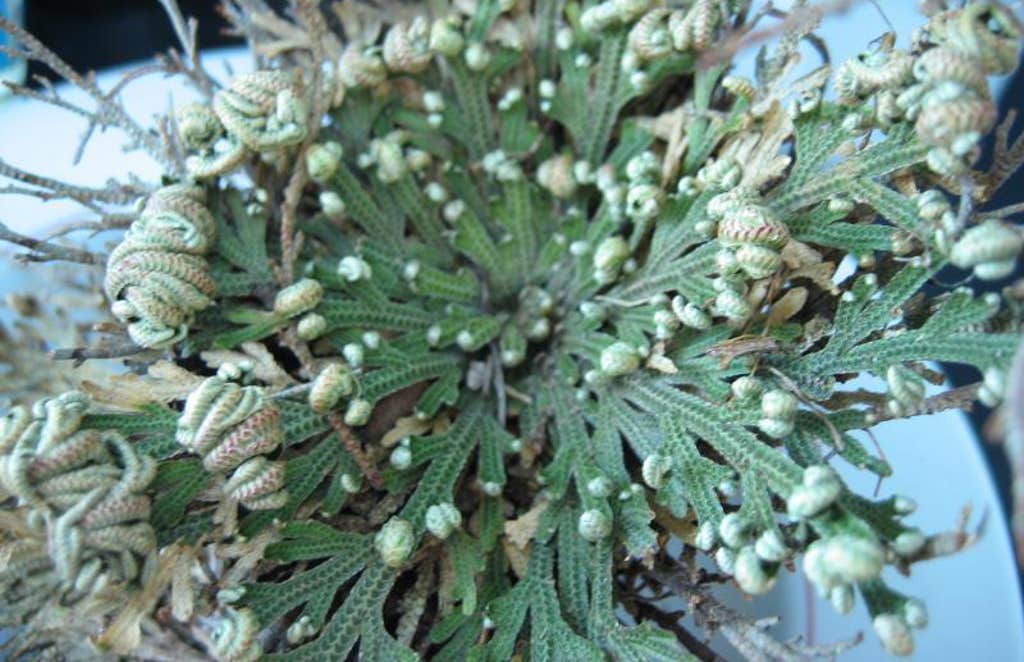
A strange thing happens when Selaginella lepidophylla, a spike moss native to the Chihuahuan Desert, is subjected to extreme dry spells that essentially dehydrate it: The plant folds itself into a “nest-ball” shape to stay alive, turning brown in the process. To bring it back, one literally just needs to add water; the plant will spring to life, steadily unfurling and regaining its green coloration. Scientists are focused on understanding, on a molecular level, exactly how it manages to survive times of drought, as this may hold the key to more drought-resistant crops in the future.
Hair-trigger plant
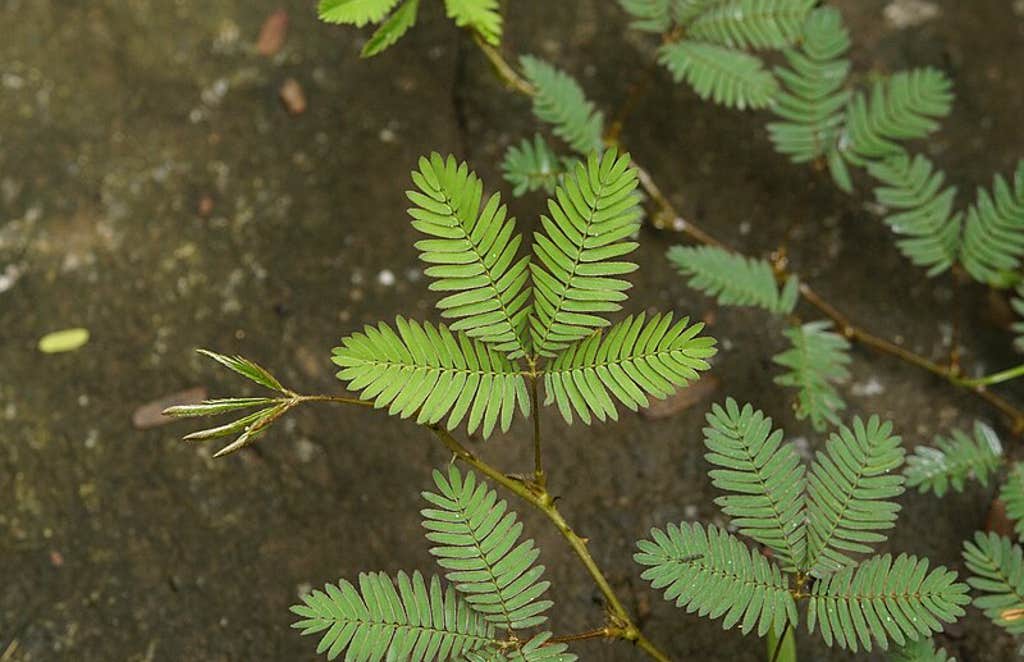
Nicknamed the “sensitive plant” due to its hair-trigger-like leaf-curling defense mechanism, Mimosa pudica has become something of a common sight in agricultural fields, grassy roadsides, and wastelands in Southeast Asia. Originating from the American tropics, the plant is said to produce about 675 seeds a year, which are designed for easy dispersal (i.e., sticking to clothes and animal hairs). Known in the Philippines as “makahiya”—derived from the Tagalog word “hiya,” meaning “shame”—this plant’s leaves fold when they are touched, grazed, or physically disturbed. In 2014, scientists theorized that because Mimosa pudica’s leaf-folding was a display of “clear habituation” (or when an organism gets used to repeated stimulation), it may actually have the ability to learn. Testing this theory, they found that the plant only needed a few seconds to “learn” how not to react to a non-harmful stimulus, and could “remember” this information even while remaining undisturbed by that stimulus for weeks.
Death apple tree

There’s a reason why the manchineel tree (Hippomane mancinella), which is native to certain areas in the Americas, is what many refer to as the world’s most poisonous tree. Virtually every part of it can cause harm to humans when touched or ingested, from its blister-causing tree sap to the blinding irritants that hitch a ride in smoke produced by its burning wood. For instance, a consultant radiologist and a non-medical friend had the “most unfortunate experience” of eating the tree’s fruit. Among the symptoms they reportedly experienced were a burning, tearing sensation, tightness of the throat, and a subsequent inability to swallow food. Thankfully, the symptoms subsided over the course of eight hours. Certain iguana species (such as the garrobo), however, can eat the tree’s fruit and hang out on its branches without suffering any noteworthy adverse effects.
Shrew droppings toilet
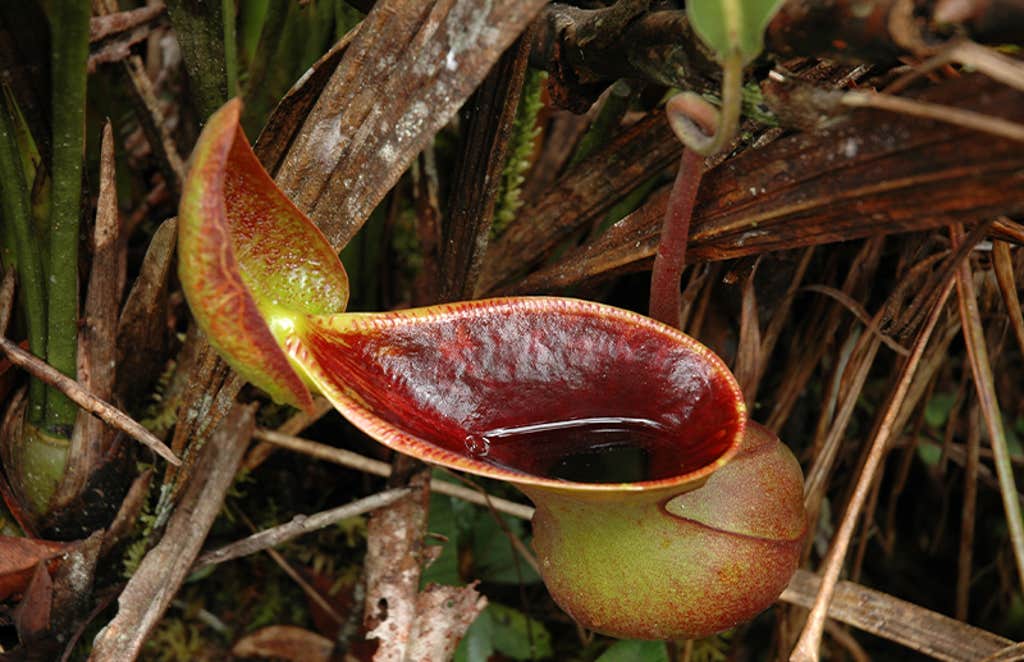
Native to the mountains of Borneo, Nepenthes lowii is a peculiar pitcher plant, even among its genus. Thanks to the shape of Nepenthes lowii’s upper pitcher, opening, and flap, it’s difficult to look at this plant without imagining a toilet bowl—which, as it turns out, is precisely the purpose it serves for tree shrews. Tree shrew droppings provide Nepenthes lowii with anywhere between 57 percent and 100 percent of its foliar nitrogen needs, which may explain why the pitcher’s dimensions are a near-perfect match for the small mammal. Various aspects of this mutualistic relationship require further study before experts could fully understand how the species came to work together. However, 2012 research on Nepenthes lowii and two other Nepenthes plants revealed that they have visual cues on their pitchers’ lids that capitalize on the tree shrew’s sensitivity to blue and green light—signs for the creature to sit down and do its business there, so to speak.
Stinking corpse lily
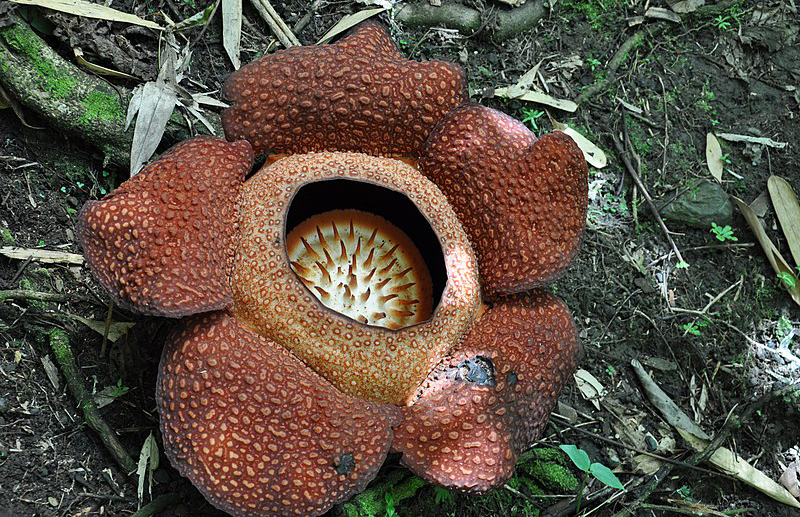
Endemic to Southeast Asia’s tropical rainforests, Rafflesia plants are holoparasites. Incapable of photosynthesis (and thus, self-nourishment), these species depend entirely on their host plants for survival. Even stranger, they have no roots, stems, or leaves of their own. Instead, they lie in wait within the tissues of certain Tetrastigma vines, emerging only when the time is right to reproduce, in the most conspicuous manner possible. Indeed, the genus is famous for its enormous blooms, with one species, R. arnoldii, holding the record for the world’s largest single flower in terms of weight. And while Rafflesia flowers are visually hard to miss, their smell, said to be reminiscent of rotting meat, makes them nigh-impossible to ignore. According to experts, this one-two punch to the senses attracts their pollinators, carrion flies. But while their adaptations have made them massive, malodorous masters of their environment, Rafflesia plants are classified as endangered. Thus, for years, Rafflesiologists (scientists who study Rafflesia plants) have been attempting to unlock the secrets of growing these enigmatic flowers outside of their native habitat.
Dancing plant
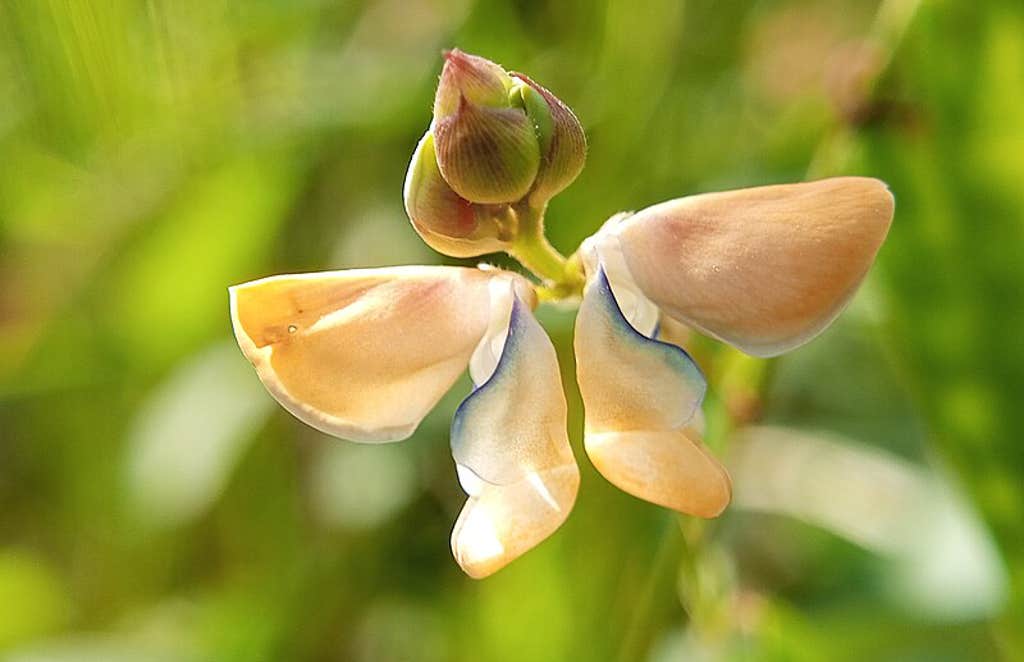
The leaves of Codariocalyx motorius, a shrub found in various South Asian countries, have been known to perform quick, elliptical movements brought about by changes in light and temperature. At 35 degrees Celsius, for example, its leaves are said to do a fast, full rotation within just a minute and a half. To this day, the purpose of this plant’s “dancing” ability continues to elude experts, though some have suggestions. One idea is that it’s meant to mimic how butterflies move, in order to deter them from laying their eggs on the plant. Describing the bizarre movement of this plant in his book, Charles Darwin wrote: “No one supposes that the rapid movements of [its] lateral leaflets are of any use to the plant; and why they should behave in this manner is quite unknown.” ![]()
Lead photo: Jeremiah Harris / Wikimedia Commons
-
Mikael Angelo Francisco
Posted on
Mikael Angelo Francisco is a science journalist and illustrator from the Philippines who enjoys writing about paleontology, biodiversity, environment conservation, and science in pop culture. He has written and edited books about media literacy, Filipino scientists, and science trivia.
Get the Nautilus newsletter
Cutting-edge science, unraveled by the very brightest living thinkers.
Discover more from CaveNews Times
Subscribe to get the latest posts sent to your email.


























![Exploring the Serene Beauty of Nature: A Reflection on [YouTube video title]](https://cavemangardens.art/storage/2024/04/114803-exploring-the-serene-beauty-of-nature-a-reflection-on-youtube-video-title-360x180.jpg)


























